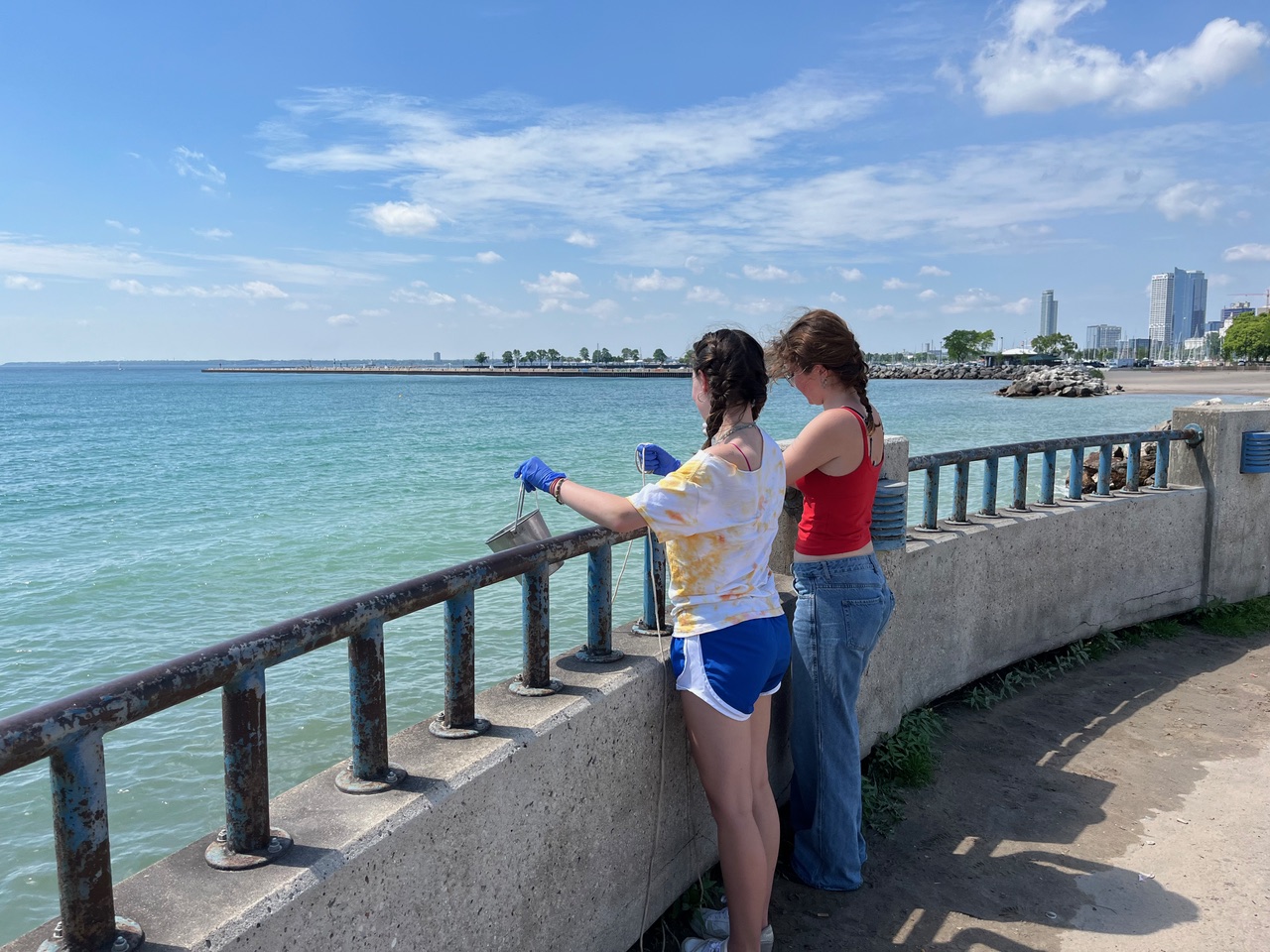Water and sediment in the three rivers that converge in Milwaukee, Wis., and the city harbor contain antibiotic-resistant bacteria in greater amounts than in bacteria isolated from the city’s hospitals, a Wisconsin Sea Grant researcher and her colleagues have found. The researchers are concerned these environmental “hotspots” for drug-resistant bacteria could harm human health by increasing the incidence of bacterial resistance in medical centers, and they urge people not to use antimicrobial products in their homes.
Krassimira Hristova, assistant professor in Marquette University’s Biological Sciences Department, and her colleagues published their findings in “Frontiers in Microbiology.” They took both water and sediment samples from the Milwaukee Harbor and the Kinnickinnic, Menomonee and Milwaukee rivers, growing E. coli bacteria from the samples in the lab and screening them for resistance to 17 kinds of antibiotics.
The research team undertook the study to learn more about the relationship between antibiotic resistance in clinical settings and the environment, and about what genetic mechanisms code for this resistance.
“Fewer and fewer antibiotics are still viable options for treating even common infections,” said Hristova. “We wanted to look at the environmental factors that could contribute to this.”
Drug resistance was most prevalent for the widely used antibiotics erythromycin, sulfamethoxazole, aztreonam and ampicillin. Resistance occurred in 72 to 88 percent of the bacteria isolated from the samples. Chloramphenicol proved the least prevalent drug for antibiotic resistance, observed in less than 7 percent of the isolates.
The researchers suspect that genes for antibiotic resistance are disseminated between the bacteria from clinical sources and the environment during the treatment process or when the clinical bacteria gets into surface waters through wastewater effluent. The bacteria end up living in the river and harbor sediment for long periods of time, increasing the likelihood for antibiotic resistant gene exchange with other bacteria. The researchers are in the process of genetic studies to gain a clearer picture of how the transfer is happening. Hristova said humans could be exposed to these multi-drug resistant environmental bacteria through recreational activities in the water or possibly even through drinking water.
“Our biggest concern is that we are creating hotspots in the environment for antibiotic-resistant bacteria,” Hristova said. “Our wastewater treatment plants are not designed to remove all bacteria or to destroy the DNA that’s released from these bacteria.”
One thing she says people can do to help is by not contributing to the problem. “We should not dispose of our unused medication by flushing it down the toilet – turn it in during community collection events instead,” Hristova said. “We should also not use antibacterial products in our daily life. This contributes to the creation of superbugs resistant to antibiotics. The amount of triclosan and other anitibacterial chemicals in the waste stream is way higher than the amount of antibiotic medicines in the waste stream.”
The researchers think antibiotic resistance gene exchange processes similar to those that may be happening in the sediment could be occurring in the guts of invasive zebra and quagga mussels, which are found in large numbers in Lake Michigan and its harbors.
“The mussels are filter feeders, and even with short bacteria residence times, we observed in my lab that genetic exchange can happen between the different bacteria that the mussels filter out of the water,” Hristova said. “Our findings bring awareness of how important it is that we learn more about antibiotic resistance in the environment and take action to prevent this form of pollution.”
The lead author of the study is Anthony Kappell, Marquette University. Besides Hristova, other co-authors are Maxwell DeNies and Neha Ahuja, Marquette University; Nathan Ledeboer, Medical College of Wisconsin and Dynacare Laboratories; and Ryan Newton, University of Wisconsin-Milwaukee.





